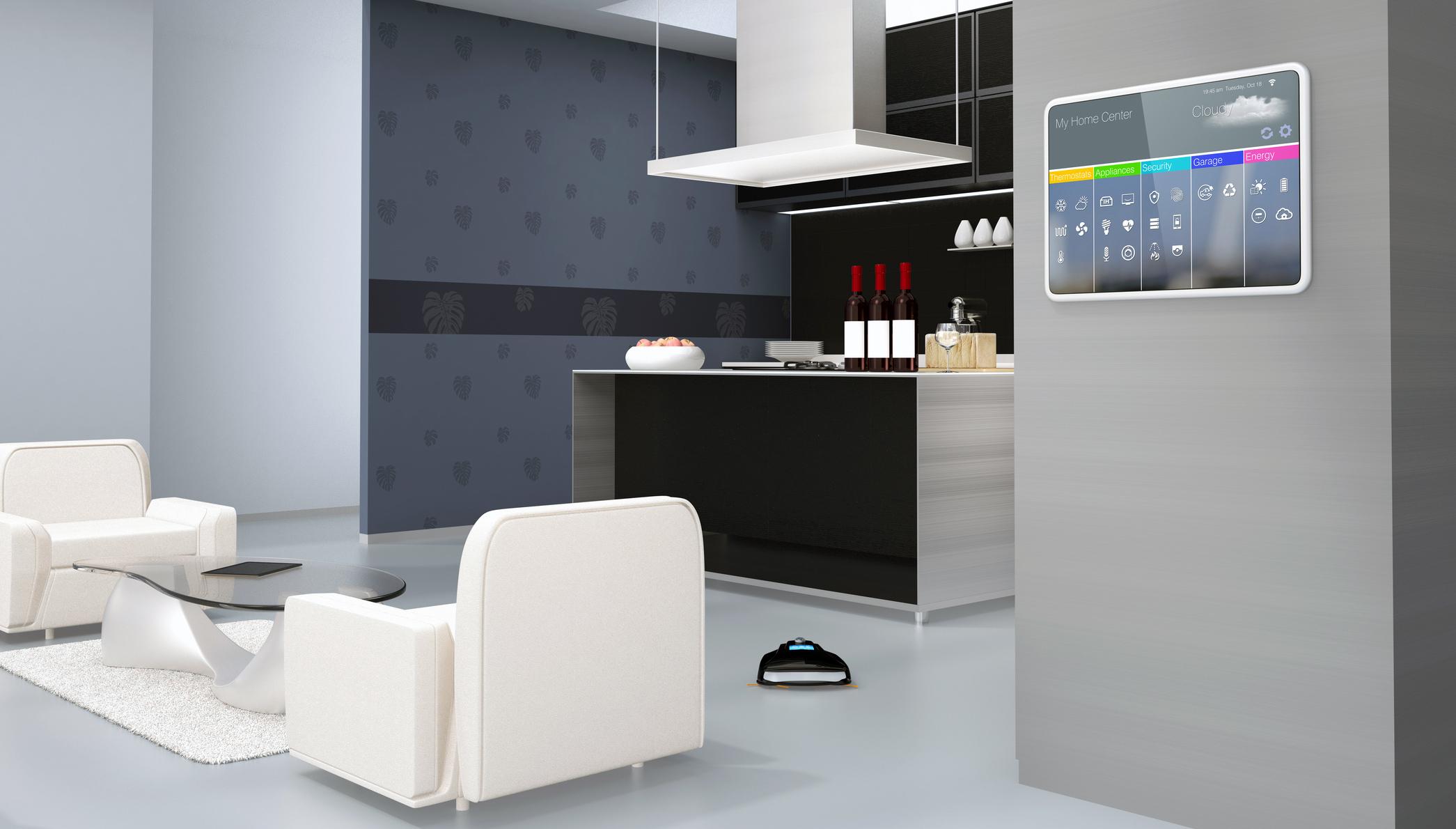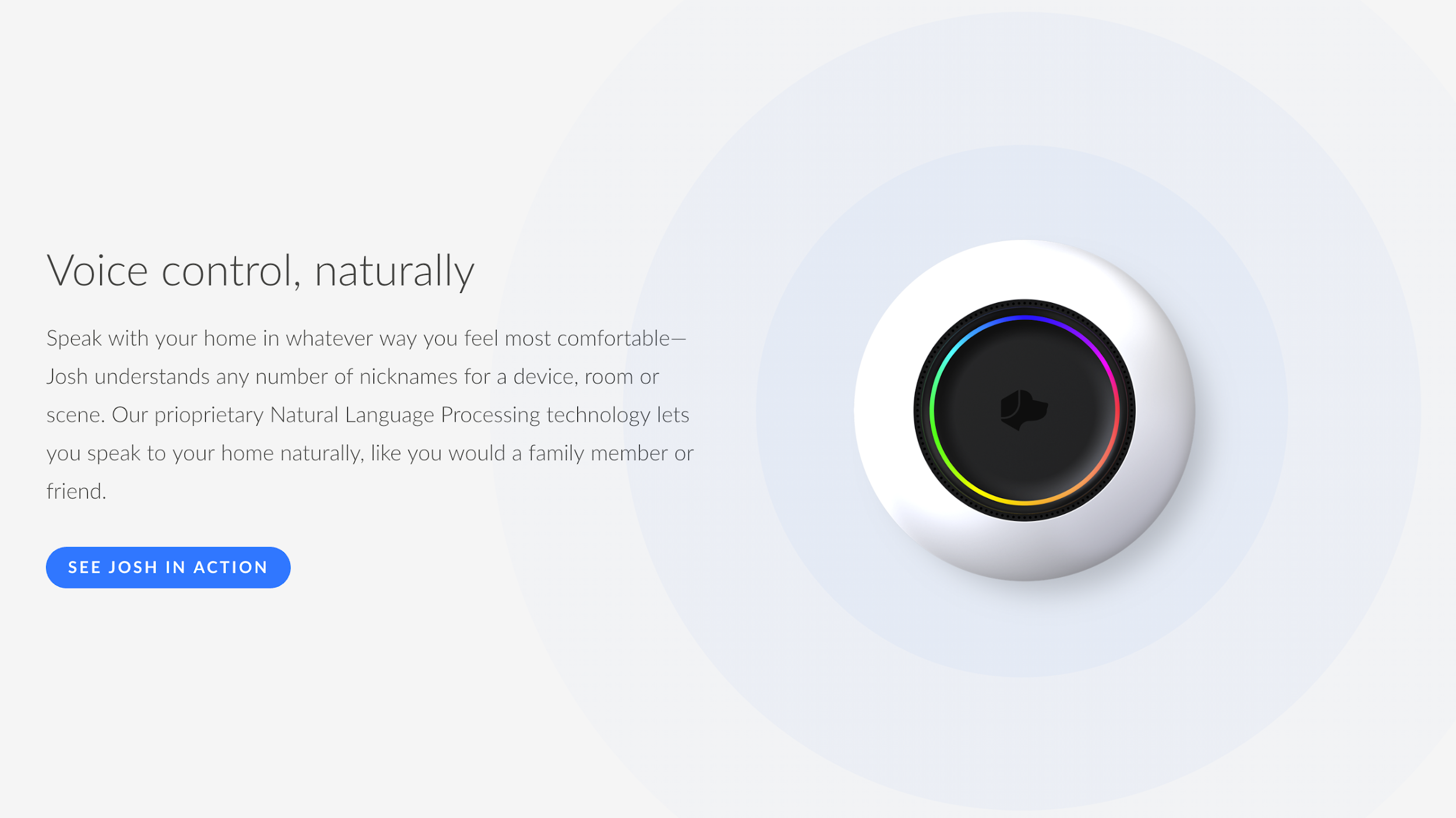Internet of Things at Home
It’s been a few years since we started hearing the buzz about a new type of domestic technology. Smart mirrors, robot vacuum cleaners, wireless kitchen appliances— interactive, internet-connected devices that would transform our lives. In 2019, IoT smart home device sales will reach $13 billion, and are forecasted to reach a value of more than $53 billion by 2022.
But in this always-connected IoT home of mood-sensing music systems, smart lighting, intelligent heating and cooling, motorized blinds, and automated windows and doors, there seems to be little discussion about whyconsumers haven’t unequivocally bought into the IoT home hype, or whether domestic life has actually improved as a result of it.
Considering how personal our homes are, shouldn’t it be a concern that the companies advertising these products tend to discuss “convenience, connectedness, and security” more than the potential improvement to the quality of life? Is the adoption of the Internet of Things (IoT) into our homes inevitable? Is it already here?

Somewhere in the Near Future
A tired business person returns to their certified IoT smart home after a long working week. The smart security system senses they are alone and initiates the “Friday Night In” sequence. An intercom with a thoughtful, comforting voice suggests they might want to order in tonight. The business person unloads their things in the kitchen where the smart stove displays a selection of take-outs, rather than its default recipe guide.
After the food arrives they retreat to the living room to watch some TV. The smart TV prepares a selection of Netflix marathons categorized by mood. They choose: “Looking to be cheered up? Comedy Playlist.”
Before starting the program, they review a set of graphs displaying the data from their activity and diet throughout the day. A list of tips for smart living is generated, one of which reads that based on the number of consecutive nights spent alone, they might consider exploring a selection of popular dating sites instead of watching TV.
With an inadvertent slip of their thumb the request is OK’d and instantly a set of profiles are displayed, each chosen from a generated list of their tracked preferences. A flurry of pings and messages from other stay-at-home hopefuls fills the screen. The smart home intercom exclaims, “You’ve got mail!” The confused and beleaguered business person fumbles for the remote and… uh-oh, the TV snaps a selfie in response to the flood of pings.
Their image, sitting in their underwear eating noodles appears briefly on the screen before being whisked off into the ether. The flood of messages doubles, the system freezes causing the smart home to reboot. The house goes dark.

Home Smart IoT Home
With all the headlines and debate regarding the internet of thingsand IoT applications, the number of connected devices and market valuations, is there anyone questioning what will happen to the home once smart homes take over? Does the smart home mean the end of the “home” as we know it?
The home is the first place we build our identity and mark our place in the world—our original profile. Generations build upon generations, and we can look back into those past homes as windows into the lives of those generations, their values, and ambitions. What do our smart homes tell us about ourselves? Or perhaps, what is revealed to everyone else?

A Brief History of the Automated Home
The movement towards the automated home began almost two centuries ago. With the advent of electricity, when we first “plugged in” our homes, the light bulb gave us the night. Though not universally considered the healthiest or “best” thing, the fact remains technology freed us from the confinement of natural light.
Later, appliances replaced tools, and everything that moved, or could move, became battery powered. The first generation of the automated home advertised better performance and the gift of more leisure time. More time for the family, more opportunity for the once tethered housewife to pursue a career, the automated home liberated us from the need to maintain it.
Change is inevitable, and the technological trend toward a new generation of domestic freedom is building. But at what cost? By inviting the world in, are we becoming too exposed? By adopting the smart home, are we forfeiting the security our home, our most personal space, has given us over millennia?
Given the acceptance worldwide that privacy is dead, these thoughts may fall on deaf ears as far as developers and designersare concerned. The point, though, is to question what the smart home is offering in exchange for what we must give up. Is the trade worth it? Will domestic life improve as it did during the first generations of automation? As designers, charter members of the community playing a large and important part in that change, how do we ensure that some amount of dignified domesticity is retained?

The State of the Internet of Things
The internet of things (IoT) is one of those hot topic terms that when we hear it, we know its significance, and yet know little about its tangible effects. And we hear fantastic numbers like “75 billion IoT-connected devices worldwide by 2025” being bandied about.
But these numbers have a similar significance to knowing that the earth is 92.2 million miles away from the sun. They’re very important numbers, yet the large majority of us don’t understand the specifics and certainly don’t address the numbers daily. All that most of us want to know is how it will improve our lives.
What fuels the resistance to IoT smart home technology being adopted with the same ubiquity as smartphones enjoy today? Consider the early phases of smartphone technology. What caused them to make the leap from a niche device to being fastened to the ear of nearly every person on the planet?
Smartphones existed for about a decade before the market saw a significant boost. The release of the iPhone in 2007 generated a major shift as Apple was the first to design and market the device for everyday use. The elements that the iPhone introduced (or improved) seemed to be subtle interface adjustments and yet were able to catalyze a major shift. What could the critical tipping point for IoT smart homes be?

The Issue with Niche, Internet of Things Products
There seems to be more smart home products with which to outfit your home released every day. Yet with each new system, there is a new IoT device, with a new remote that connects with a new app on your smartphone. And no matter how potentially helpful any of these devices might be, how innovative and unique, they do not appear to be allied with any greater purpose.
A few years ago, Yves Beharreleased the designs for a connected garden tracking system called Edyn. The system contains two products, one to monitor the soil, and another to respond to the tracked data and irrigate the garden as necessary. With the data, the app can recommend which plants might be the easiest to grow, and what they may need in order to flourish.
Seems pretty handy, but is it essential enough to become widely adopted, or to really change the way we maintain our yards? This tool is representative of most smart home technology. Nice to have perhaps, but is it really worth it?
Here is a story about a man in England who spent 11 hours trying to make a cup of tea with his WiFi kettle. It seems that the base station was not able to communicate with the kettle itself. The story is from 2016, but here lies the conundrum—the interaction between devices. The kettle didn’t come with software that would easily allow integration with other devices in his home.

What’s Next in IoT Home Automation
The issue with the clunky interaction between multiple apps has become clear, and there is a definite push towards developing a superior home integration ‘hub’ for all Internet of Things smart home devices. Some of the key players are: SmartThings, Wink, Amazon’s Echo, and Apple is generating momentum with HomeKit.
So far there is no real front runner. What seems to be lacking is a proper interface that can relieve some of the headaches getting in the way of convenience.
One product, Josh.ai, has recognized the need for cohesion between devices, and using its proprietary natural language processing (NLP) technology, focuses its manifesto towards interfacing. They have anticipated the need for programs to develop and build with the user over time.
Subsequently, certain commands are memorized, so Josh.ai knows that every morning it should slowly raise the lights, turn on the morning news, and prepare a cup of coffee. The interface takes the work out of choosing between apps and responds to voice commands to manage all connected devices. Josh.ai is advertised as letting “you speak to your home naturally like you would to a family member or friend.”

Josh.ai bases its product around the use of voice rather than any other interface—a critical move for smart home technology. Their platform essentially asks how people can program their home with as little work as possible. The aspiration being that even complex processes like morning routines could be programmed by voice and memorized for the future. “Hey Josh, when I get home can you turn up the lights, set the oven to 300, and put on something like Frank Sinatra? I’m bringing home a friend.”
If Josh.ai is one of the more promising home integration hubs to move the smart home trend to the next stage, what does its manifesto say about what we can expect from the technology in the near future?
The phrase “make your life easier and more productive” is repeated often in these product manifestos. Most of what they offer is autonomous control of things like lights and music. We live in a different world these days, it’s true, but does this compare at all to the transition from brooms to vacuum cleaners?
The three essential points of Josh.ai are effortless energy saving, continuous awareness of devices, and a more networked system. How do these values compare to past technologies that significantly liberated the average person?
Although the benefits of some of the IoT products may seem underwhelming, the real issue here is that they potentially pose a significant risk. Take Nest, for example; what could be more harmless than a thermostat? Yet in its relatively short life, Nest has already been censured for the sale of home fire history to insurance companies.

If a smart home hub became your “best friend,” would you want it to know everything about your preferences? How much do we really want our family or closest friends to know about ourselves? Do we tell them that we’re lonely? Even if they are very good at keeping secrets, do we share our innermost thoughts with them?
When someone exhorts against the inevitable, they can come across as a Luddite or cranky soap boxer. But doesn’t it seem just a little strange that not so long ago we marched for privacy, and here we are, eagerly handing it back?


Comments
Post a Comment
If this post is helpful. Drop us a message